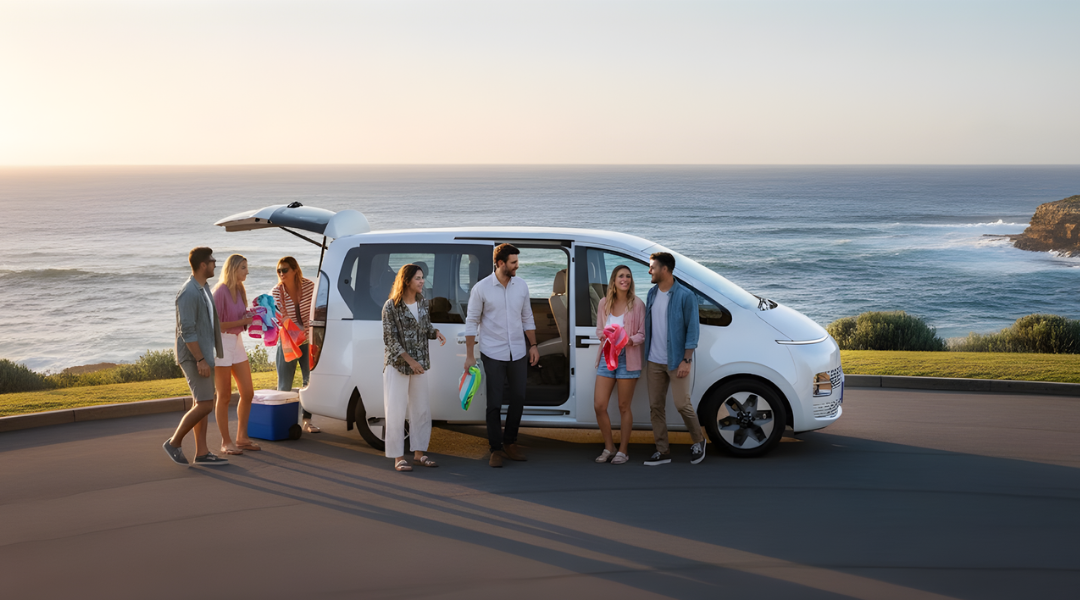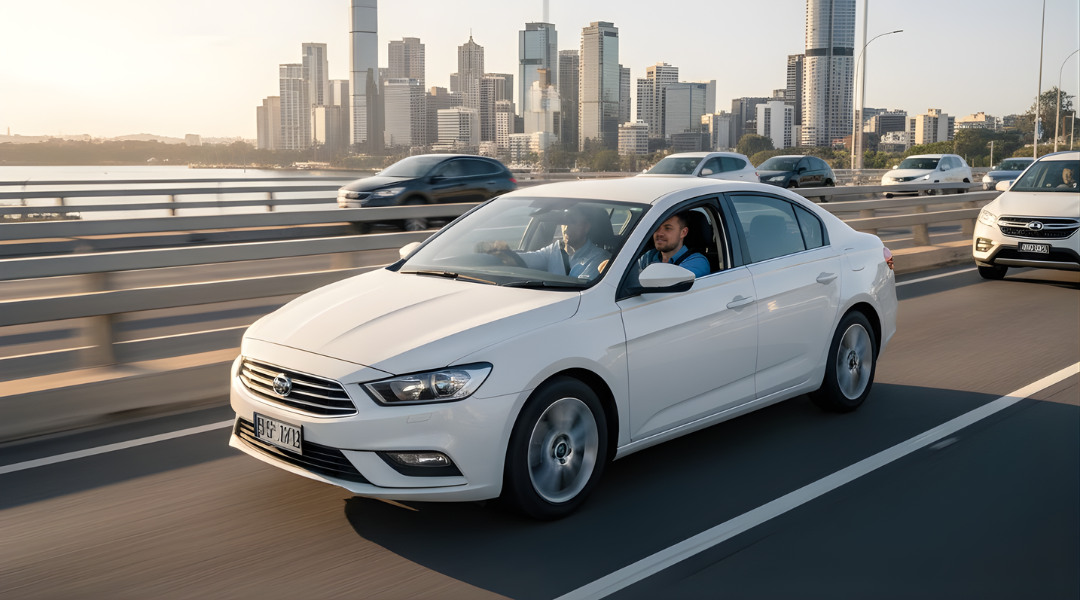Sydney’s road network can be complex, especially for visitors unfamiliar with the city. By understanding the main roads, highways, and local routes, you can navigate the city efficiently and avoid traffic congestion.
This guide will provide you with essential information on Sydney’s road network, peak-hour traffic, and alternative routes.
Understanding Sydney’s Road Network
Sydney’s road network consists of a mix of highways, arterial roads, and local streets. Here’s a brief overview:
- Freeways: The major freeways in Sydney include the M1, M2, M4, M5, and M7. These are often the fastest way to get around the city, but they can also be congested during peak hours.
- Arterial Roads: Arterial roads are major roads that connect different parts of the city. They can be busier than local streets but often offer more direct routes.
- Local Streets: Local streets are smaller roads that run through residential areas. They can be a good option for avoiding traffic congestion, but they may be slower.
Need a car to explore Sydney? Check out Alpha Car Hire for reliable and affordable car rental options.
Peak Hour Traffic: Avoiding the Rush
Sydney experiences heavy traffic during peak hours, especially in the morning (7-9 AM) and evening (4-6 PM). Here are some tips for avoiding the rush:
Public Transportation
- Trains: Sydney has a reliable and efficient train network that can help you avoid traffic congestion during peak hours. Check the train schedule and plan your journey accordingly.
- Buses: Buses are another convenient option for getting around Sydney. They can be a good choice for reaching specific destinations or areas not served by trains.
- Ferries: Consider taking a ferry to cross Sydney Harbour, especially during peak hours when traffic can be heavy.
Alternative Routes
- Navigation Apps: Use navigation apps like Google Maps or Waze to find alternative routes that may be less congested during peak hours. These apps can also provide real-time traffic updates.
- Local Knowledge: Ask locals for their recommendations on alternative routes, especially if you’re familiar with the area.
- Backstreets: Explore the backstreets of Sydney’s neighbourhoods to find hidden shortcuts that can help you avoid traffic.
Plan Ahead
- Check Traffic Reports: Stay updated on traffic conditions by listening to the radio or checking online traffic reports.
- Avoid Peak Hours: If possible, plan your trips to avoid peak hours. Consider leaving earlier or later to avoid the rush.
- Be Flexible: Be prepared to adjust your plans if you encounter unexpected traffic congestion.
Shortcut Routes: Hidden Gems for Locals
Sydney’s locals know a few hidden shortcuts that can help you avoid traffic and save time. Here are some examples:
Backstreets
- Explore Sydney’s Neighborhoods: Discover hidden backstreets that can lead to quicker routes and avoid busy roads.
- Local Knowledge: Ask locals for their favourite backstreet shortcuts, as they often know the best ways to navigate the city.
- Map Apps: Use navigation apps with detailed maps to explore alternative routes and discover hidden shortcuts.
Ferry Routes
- Harbor Crossings: Take a ferry to cross Sydney Harbour instead of driving, especially during peak hours. Ferries offer a scenic and efficient way to travel across the harbour.
- Popular Routes: Some popular ferry routes include Circular Quay to Manly, Circular Quay to Darling Harbour, and Circular Quay to Watsons Bay.
- Check Schedules: Check ferry schedules in advance to plan your journey and avoid delays.
Local Knowledge
- Ask the Locals: Locals often have the best knowledge of shortcuts and hidden gems. Don’t hesitate to ask locals for their recommendations.
- Join Online Forums: Participate in online forums or social media groups dedicated to Sydney travel to get tips and recommendations from other travellers.
- Talk to Your Accommodation: Your hotel or accommodation can provide valuable information about local shortcuts and transportation options.
Toll Roads: A Cost-Effective Approach
While toll roads can add to the cost of your trip, there are ways to save money:
- Electronic Toll Collection (ETC) Tags: Using an ETC tag can save you time and money, as you won’t have to stop at toll gates. ETC tags are electronic devices that automatically deduct toll fees from your account as you pass through toll gates.
- Toll Road Networks: Some toll road networks offer discounts for frequent users. If you’re planning to use toll roads frequently, it may be worth investigating whether any discounts are available.
- Budgeting: Factor in toll costs when planning your trip and budgeting accordingly. This will help you avoid unexpected expenses and ensure you have enough money to cover all your costs.
Parking in Sydney: A Local’s Perspective
Parking in Sydney can be challenging, especially in the city centre. Here are some tips:
- Paid Parking: Look for paid parking garages or street parking meters. The cost of parking will vary depending on the location and time of day. Be sure to check the signage for parking restrictions and time limits.
- Free Parking: Some areas may offer free parking, but availability can be limited. Check for signs indicating free parking zones, especially in residential areas or shopping centres.
- Public Transportation: Consider using public transportation to avoid parking hassles, especially in busy areas. Sydney has a well-developed public transport system, including trains, buses, and ferries.
Public Transport: A Convenient Alternative
Sydney has a well-developed public transport system, including trains, buses, and ferries. Using public transport can be a convenient and cost-effective way to get around the city.
- Train Network: Sydney’s train network is extensive and connects many suburbs to the city centre. Trains are a reliable and efficient way to travel, especially during peak hours.
- Bus Network: Buses serve a wide range of areas in Sydney, providing flexibility and accessibility. Buses can be a good option for reaching smaller neighbourhoods or specific destinations.
- Ferries: Ferries offer a scenic way to travel around Sydney Harbour and visit popular destinations like Manly Beach and Circular Quay. Ferries can be a convenient alternative to driving, especially during peak hours or for special events.
Driving in the City: Tips for Newbies
If you’re new to driving in Sydney, here are some tips to help you navigate the city’s roads:
- Start Slow: Begin by driving in less congested areas, such as residential neighbourhoods or parks. This will allow you to get used to the traffic and road conditions without feeling overwhelmed.
- Learn the Road Rules: Familiarize yourself with Australian road rules and regulations before driving. This includes understanding the rules for roundabouts, lane discipline, and speed limits.
- Use a Map or GPS: Use a map or GPS navigation system to help you find your way around the city. This can be especially helpful if you’re unfamiliar with the area.
- Be Patient: Traffic in Sydney can be heavy, especially during peak hours. Be patient and avoid getting frustrated.
- Ask for Directions: If you’re unsure of how to get somewhere, don’t hesitate to ask for directions from locals or other drivers.
Roadside Assistance: Be Prepared for Emergencies
- Know Your Coverage: Understand what your rental car insurance or roadside assistance plan covers. This information should be included in your rental agreement.
- Emergency Kit: Keep an emergency kit in your car, including a first-aid kit, jumper cables, flashlight, water, and snacks. This will be helpful in case of a breakdown or other emergency.
- Contact Information: Keep the contact information for your rental car company and roadside assistance provider handy. This will make it easier to get help if you need it.
Local Driving Etiquette
- Courtesy: Australian drivers are generally polite and courteous on the road. Be mindful of other drivers and pedestrians.
- Yielding: Yield to pedestrians and cyclists, especially at crosswalks and intersections.
- Roundabouts: Give way to vehicles already in the roundabout. This means yielding to traffic on your right.
- Horn Use: Use your horn sparingly and only when necessary to alert other drivers. Excessive horn use can be considered rude.
Hidden Gems: Off-the-Beaten-Path Destinations
Sydney offers many hidden gems that are worth exploring. Here are a few suggestions:
- Bondi Beach: This iconic beach is a must-visit for surfers, swimmers, and sunbathers.
- Manly Beach: Another beautiful beach with great surfing and swimming.
- The Rocks: This historic neighbourhood is home to charming cobblestone streets, historic buildings, and boutique shops.
- Royal Botanic Garden: Enjoy a peaceful stroll through this beautiful botanical garden.
- Taronga Zoo: See a variety of native and exotic animals at this world-class zoo.
- Luna Park: Have fun with the family at this amusement park.
- Mrs Macquarie’s Chair: Enjoy panoramic views of Sydney Harbour from this historic landmark.
Conclusion
By following these tips, you can navigate Sydney’s roads safely and confidently. Enjoy your trip to Sydney and explore all that this vibrant city has to offer.
Navigate Sydney with Alpha Car Hire
Need a car to explore Sydney? Alpha Car Hire offers reliable and affordable car rental options.
[/vc_column_text][/vc_column][/vc_row][vc_row css=”.vc_custom_1727246131169{padding-top: 40px !important;}”][vc_column][vc_raw_html]JTVCcG9kcyUyMG5hbWUlM0QlMjJjYXJfaGlyZV9sb2NhdGlvbnMlMjIlNUQlN0IlNDBjYXJfaGlyZV9sb2NhdGlvbnMlN0QlNUIlMkZwb2RzJTVE[/vc_raw_html][/vc_column][/vc_row]




